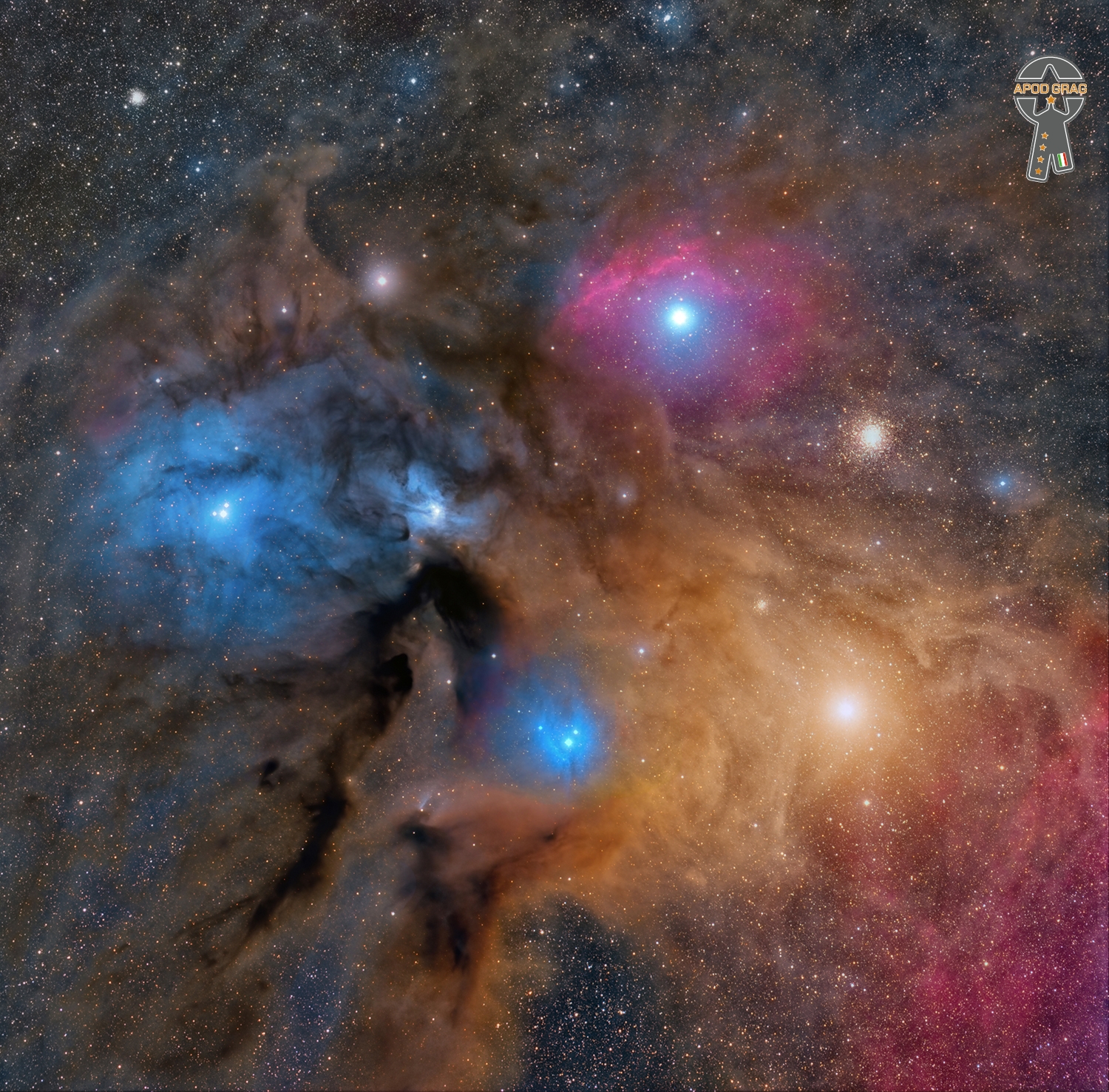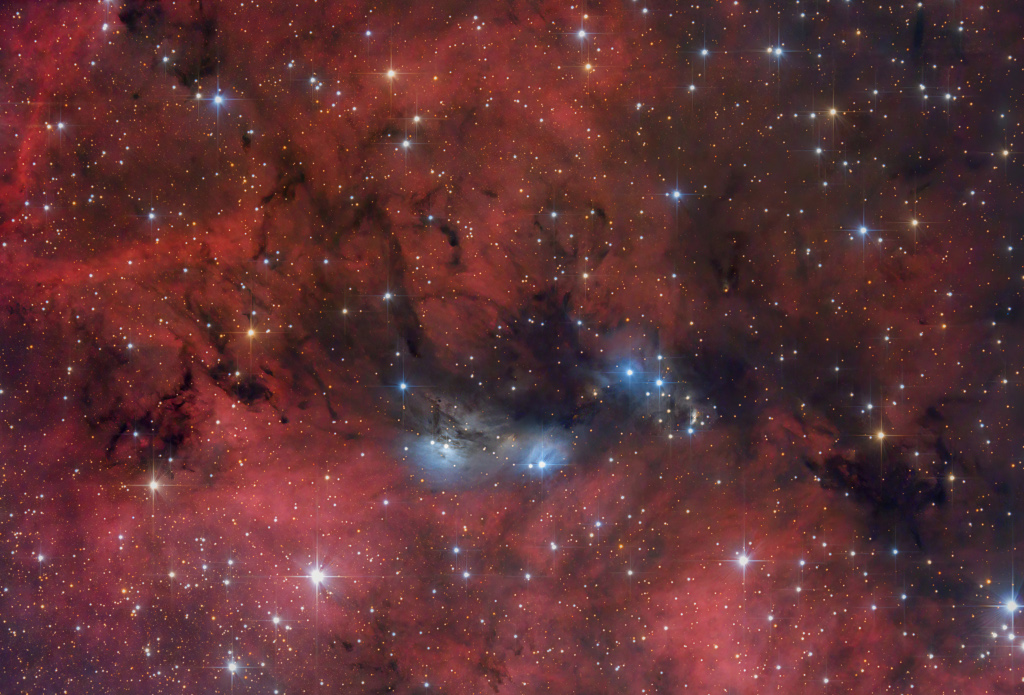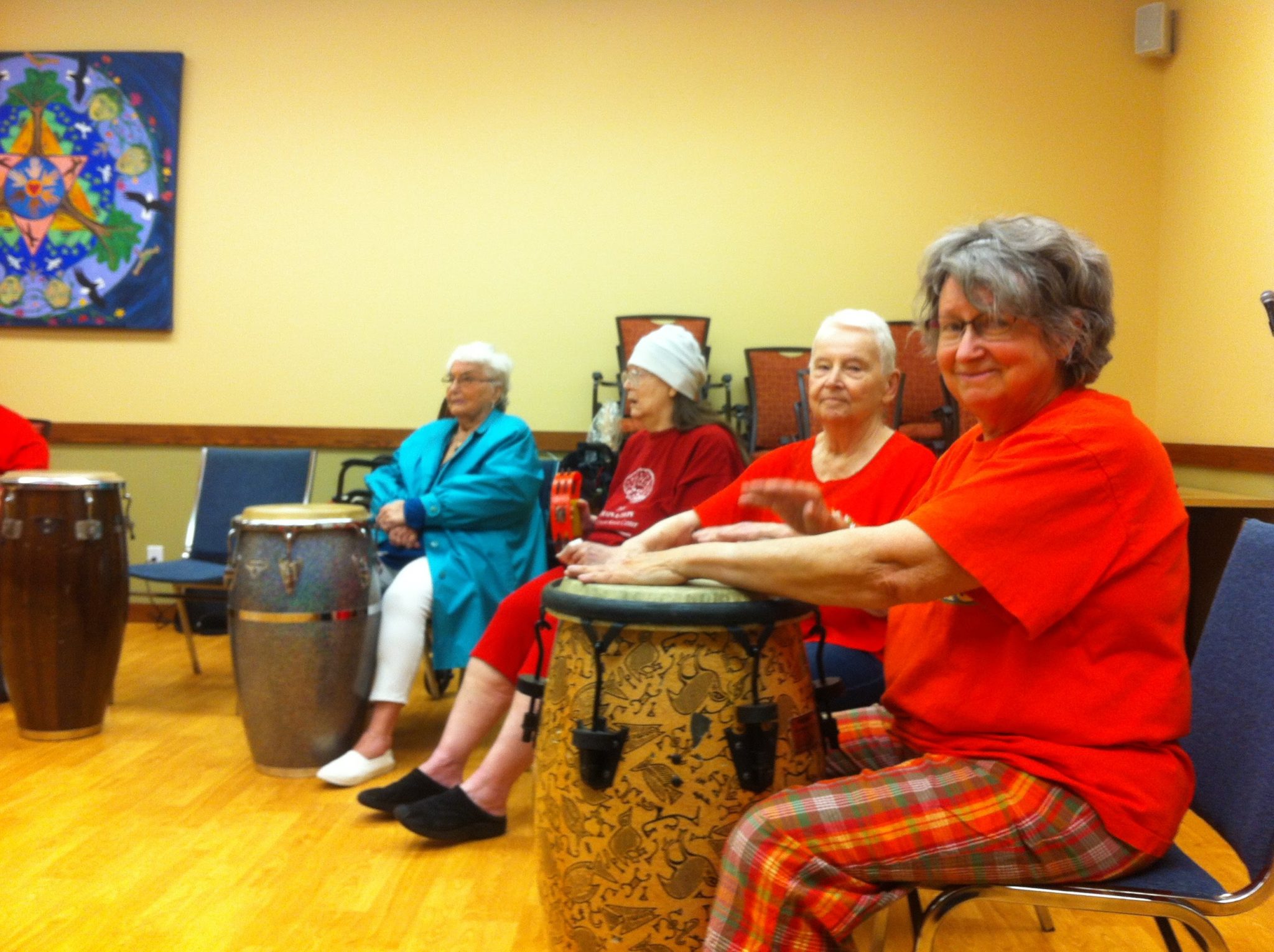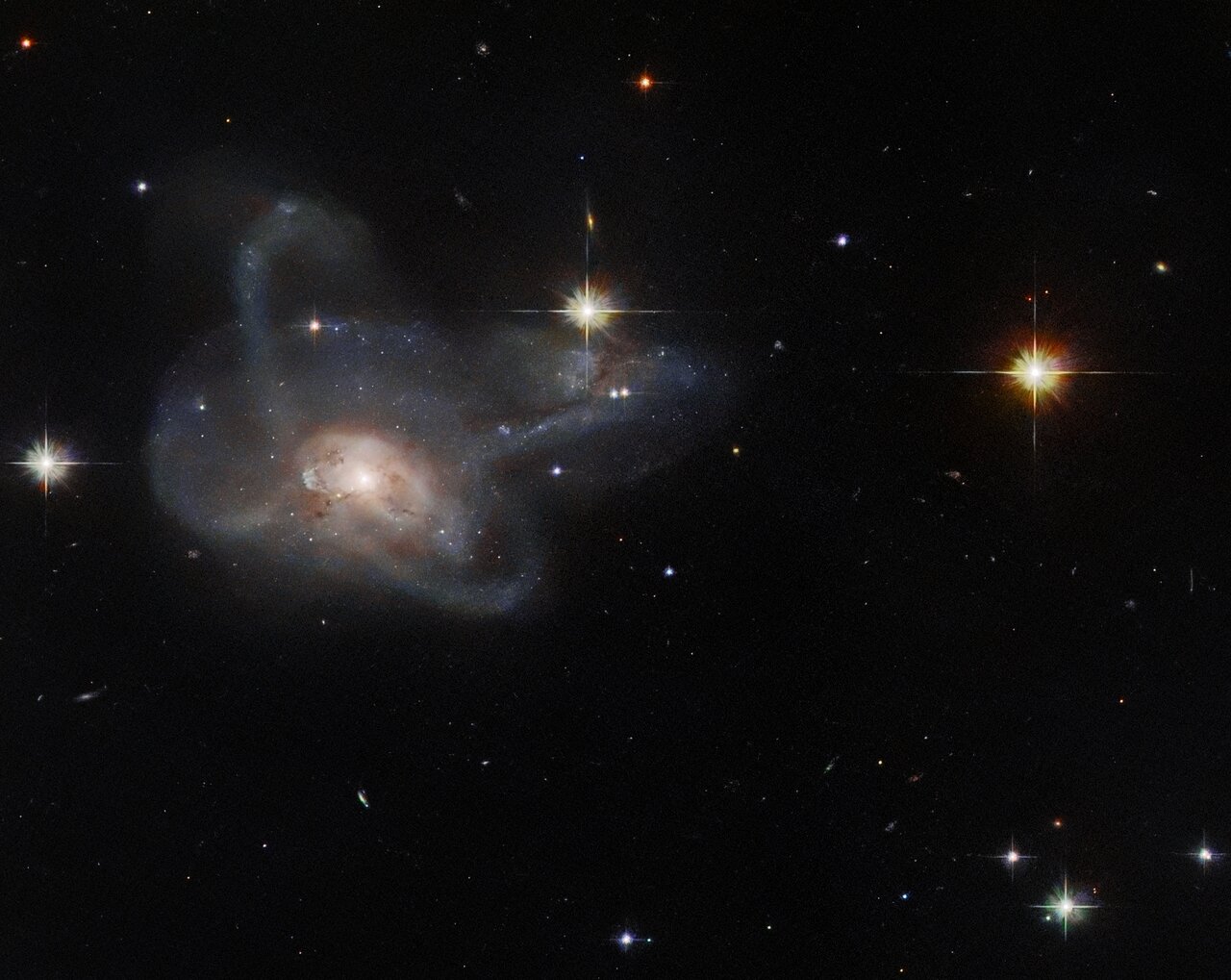Blog
The clouds surrounding the star system Rho Ophiuchi compose one of the closest star forming regions. Rho Ophiuchi itself is a binary star system visible in the light-colored region on the image right. The star system, located only 400 light years away, is distinguished by its colorful surroundings, which include a red emission nebula and numerous light and dark brown dust lanes. Near the upper right of the Rho Ophiuchi molecular cloud system is the yellow star Antares, while a distant but coincidently-superposed globular cluster of stars, M4, is visible between Antares and the red emission nebula.

John Lee Johnson (born July 8, 1944), frequently known by the stage names Jai Johanny Johanson and Jaimoe, is an American drummer and percussionist. He is best known as one of the founding members of the Allman Brothers Band.
Johanson played with a number of Muscle Shoals and Memphis soul acts in the early-mid 1960s, such as Otis Redding and Sam and Dave, as a session and touring drummer. While recording and touring he would meet the various members of what would become the Allman Brothers Band. One of the few bands at the time to employ two drummers, alongside Butch Trucks they drew on R&B, blues, jazz, country, and rock to create a unique variety of southern rock. Upon the death of founding bassist Berry Oakley, Johanson brought in frequent collaborator Lamar Williams to replace him. While on hiatus from the Allman Brothers Band in the late 1970s, he formed the band Sea Level around a core of former Allman Brother Band members including Williams and pianist/vocalist Chuck Leavell. He briefly rejoined the Allman Brothers in 1979, but left again in 1980 due to back problems, and spent much of the 1980s playing in local Macon, Georgia-area bands. He rejoined the Allman Brother Band in 1989, as the band transitioned from a southern rock sound to a more jam band feel, having added a third drummer/percussionist Marc Quiñones. The band continued to perform until formally retiring in 2014. Johanson has since fronted his own jazz outfit, Jaimoe’s Jasssz Band, and appeared with former Allman Brothers Band members for one-off reunions and in a number of different side projects.
Along with the other members of the Allman Brother Band, Johanson was inducted into the Rock and Roll Hall of Fame in 1995. As of 2022, he and guitarist Dickey Betts are the two surviving original members of the Allman Brothers Band.
more...Earl Van Dyke (July 8, 1930 – September 18, 1992) was an American soul musician, most notable as the main keyboardist for Motown Records‘ in-house Funk Brothers band during the late 1960s and early 1970s.
Van Dyke, who was born in Detroit, Michigan, United States, was preceded as keyboardist and bandleader of the Funk Brothers by Joe Hunter. In the early 1960s, he also recorded as a jazz organist with saxophonists Fred Jackson and Ike Quebec for the Blue Note label.
Besides his work as the session keyboardist on Motown hits such as “Bernadette” by The Four Tops, “I Heard It Through the Grapevine” by Marvin Gaye and “Runaway Child, Running Wild” by The Temptations, Van Dyke performed with a small band as an opening act for several Motown artists, and released instrumental singles and albums himself. Several of Van Dyke’s recordings feature him playing keys over the original instrumental tracks for Motown hits; others are complete covers of Motown songs.
more...Johnnie Clyde Johnson (July 8, 1924 – April 13, 2005) was an American pianist who played jazz, blues and rock and roll. His work with Chuck Berry led to his induction into the Rock and Roll Hall of Fame. He was posthumously awarded the Congressional Gold Medal for breaking racial barriers in the military, as he was a Montford Point Marine – where the African-American unit endured racism and inspired social change while integrating the previously all-white Marine Corps during World War II.
Johnson was born in Fairmont, West Virginia, United States. He began playing the piano in 1928. He joined the United States Marine Corps during World War II and became a member of Bobby Troup‘s all-serviceman jazz orchestra, the Barracudas. After his service, he moved to Detroit and then Chicago, where he sat in with many notable artists, including Muddy Waters and Little Walter.
more...Louis Thomas Jordan (July 8, 1908 – February 4, 1975 Brinkley, AK) was an American saxophonist, multi-instrumentalist, songwriter and bandleader who was popular from the late 1930s to the early 1950s. Known as “The King of the Jukebox“, he earned his highest profile towards the end of the swing era. He was inducted into the Rock and Roll Hall of Fame as an “early influence” in 1987.
Jordan was a talented singer with great comedic flair, and he fronted his own band for more than twenty years. He duetted with some of the biggest solo singing stars of his time, including Bing Crosby, Ella Fitzgerald and Louis Armstrong. Jordan was also an actor and a film personality—he appeared in dozens of “soundies” (promotional film clips); the one for “Caldonia” is the most readily available for viewing on various websites. He also made numerous cameos in mainstream features and short films, and starred in two musical feature films made especially for him. He was an instrumentalist who played all forms of the saxophone but specialized in the alto. He also played the piano and clarinet.
Jordan began his career in big-band swing jazz in the 1930s, but he became known as one of the leading practitioners, innovators and popularizers of jump blues, a swinging, up-tempo, dance-oriented hybrid of jazz, blues and boogie-woogie. Typically performed by smaller bands consisting of five or six players, jump music featured shouted, highly syncopated vocals and earthy, comedic lyrics on contemporary urban themes. It strongly emphasized the rhythm section of piano, bass and drums; after the mid-1940s, this mix was often augmented by electric guitar. Jordan’s band also pioneered the use of the electronic organ.
With his dynamic Tympany Five bands, Jordan mapped out the main parameters of the classic R&B, urban blues and early rock-and-roll genres with a series of highly influential 78-rpm discs released by Decca Records. These recordings presaged many of the styles of black popular music of the late 1940s, 1950s and 1960s and exerted a strong influence on many leading performers in these genres. Many of his records were produced by Milt Gabler, who went on to refine and develop the qualities of Jordan’s recordings in his later production work with Bill Haley, including “Rock Around the Clock“.
Jordan ranks fifth in the list of the most successful African-American recording artists according to Joel Whitburn‘s analysis of Billboard magazine’s R&B chart, and was the most popular rhythm and blues artist with his “jump blues” recordings of the pre-Rock n’ Roll era. Though comprehensive sales figures are not available, he had at least four million-selling hits during his career. Jordan regularly topped the R&B “race” charts and was one of the first black recording artists to achieve significant crossover in popularity with the mainstream (predominantly white) American audience, having simultaneous Top Ten hits on the pop charts on several occasions.
more...What makes this video special – the clarity of rhythmic music in Eva’s solo Soleares por Bulerías reveals the opportunity of taconeo and remates and the beauty of flamenco dance structure and rhythms collaborating through music and dance
There is no standard music for the escobilla in this dance, though it’s parent form. the Soleares has easily recognizable music for its escobilla. Dancers usually request rhythm music in the tone and key of Soléa por bulerías for extended footwork sequences. The dance follows the same structure as the Soleares.
Guitar falsetas are often included as both an introduction to the song/dance, and throughout the dance as a vehicle for the dancer. Singers admire this song, and if they perform solo versions with the guitarist only, they usually sing anywhere from 2 to 20 letras in a performance. The Soléa por bulerías and Soleares por medio are often performed together.
For our purposes, there are four features that distinguish the soleá por bulerías:
-
The compás starts on 12, and is identical to that of the Alegrías;
-
The pace is that of a slow to mid-tempo bulerías;
-
The letras follow the form of soleares letras, though the repeats at the end of phrases can vary and are often extended;
-
Often, although by no means always, there is a descending bass line in the guitar of D-C-Bb-A on beats 7-10, echoing similar lines found in soleares.
A study in contrasts, this colorful skyscape features stars, dust, and glowing gas in the vicinity of NGC 6914. The interstellar complex of nebulae lies some 6,000 light-years away, toward the high-flying northern constellation Cygnus and the plane of our Milky Way Galaxy. Obscuring interstellar dust clouds appear in silhouette while reddish hydrogen emission nebulae, along with the dusty blue reflection nebulae, fill the cosmic canvas. Ultraviolet radiation from the massive, hot, young stars of the extensive Cygnus OB2 association ionize the region’s atomic hydrogen gas, producing the characteristic red glow as protons and electrons recombine. Embedded Cygnus OB2 stars also provide the blue starlight strongly reflected by the dust clouds. The over 1 degree wide telescopic field of view spans about 100 light-years at the estimated distance of NGC 6914.

Sir Richard Starkey MBE (born 7 July 1940), better known by his stage name Ringo Starr, is an English musician, singer, songwriter and actor who achieved international fame as the drummer for the Beatles. He occasionally sang lead vocals with the group, usually for one song on each album, including “Yellow Submarine” and “With a Little Help from My Friends“. He also wrote and sang the Beatles songs “Don’t Pass Me By” and “Octopus’s Garden“, and is credited as a co-writer of others.
Starr was afflicted by life-threatening illnesses during childhood, with periods of prolonged hospitalisation. He briefly held a position with British Railbefore securing an apprenticeship as a machinist at a Liverpool school equipment manufacturer. Soon afterwards, he became interested in the UK skiffle craze and developed a fervent admiration for the genre. In 1957, he co-founded his first band, the Eddie Clayton Skiffle Group, which earned several prestigious local bookings before the fad succumbed to American rock and roll around early 1958. When the Beatles formed in 1960, Starr was a member of another Liverpool group, Rory Storm and the Hurricanes. After achieving moderate success in the UK and Hamburg, he quit the Hurricanes when he was asked to join the Beatles in August 1962, replacing Pete Best.
In addition to the Beatles’ films, Starr has acted in numerous others. After the band’s break-up in 1970, he released several successful singles including the US top-ten hit “It Don’t Come Easy“, and number ones “Photograph” and “You’re Sixteen“. His most successful UK single was “Back Off Boogaloo“, which peaked at number two. He achieved commercial and critical success with his 1973 album Ringo, which was a top-ten release in both the UK and the US. He has featured in numerous documentaries, hosted television shows, narrated the first two series of the children’s television program Thomas & Friends and portrayed “Mr. Conductor” during the first season of the PBS children’s television series Shining Time Station. Since 1989, he has toured with thirteen variations of Ringo Starr & His All-Starr Band.
Starr’s playing style, which emphasised feel over technical virtuosity, influenced many drummers to reconsider their playing from a compositional perspective. He also influenced various modern drumming techniques, such as the matched grip, tuning the drums lower, and using muffling devices on tonal rings. In his opinion, his finest recorded performance was on the Beatles’ “Rain“. In 1999, he was inducted into the Modern Drummer Hall of Fame. In 2011, Rolling Stone readers named him the fifth-greatest drummer of all time. He was inducted twice into the Rock and Roll Hall of Fame, as a Beatle in 1988 and as a solo artist in 2015, and appointed a Knight Bachelor in the 2018 New Year Honours for services to music. In 2020, he was cited as the wealthiest drummer in the world, with a net worth of $350 million.
more...Josef Erich Zawinul ( 7 July 1932 – 11 September 2007) was an Austrian jazz keyboardist and composer. First coming to prominence with saxophonist Cannonball Adderley, Zawinul went on to play with Miles Davis and to become one of the creators of jazz fusion, a musical genre that combined jazz with rock. He co-founded the groups Weather Report and The Zawinul Syndicate. He pioneered the use of electric piano and synthesizer, and was named “Best Electric Keyboardist” twenty-eight times by the readers of DownBeat magazine.
Zawinul grew up in Vienna, Austria. Accordion was his first instrument. When he was six or seven, he studied clarinet, violin, and piano at the Vienna Conservatory (Konservatorium Wien). During the 1950s he was a staff pianist for Polydor. He worked as a jazz musician with Hans Koller, Friedrich Gulda, Karl Drewo, and Fatty George. In 1959 he moved to the U.S. to attend Berklee College of Music, but a week later he received a job offer from Maynard Ferguson, so he left school and went on tour. He then accompanied Dinah Washington. He spent most of the 1960s with Cannonball Adderley. During this time he wrote “Mercy, Mercy, Mercy” and “Walk Tall”, and “Country Preacher” and played electric piano. At the end of the decade he recorded with Miles Davis on In a Silent Way as Davis was establishing the genre of jazz fusion, combining jazz with rock.
https://www.youtube.com/watch?v=cPaR1SpVaVo
more...Henry “Hank” Mobley (July 7, 1930 – May 30, 1986) was an American hard bop and soul jazz tenor saxophonist and composer. Mobley was described by Leonard Feather as the “middleweight champion of the tenor saxophone”, a metaphor used to describe his tone, that was neither as aggressive as John Coltrane nor as mellow as Stan Getz, and his style that was laid-back, subtle and melodic, especially in contrast with players like Coltrane and Sonny Rollins. The critic Stacia Proefrock claimed him “one of the most underrated musicians of the bop era.” Mobley’s compositions included “Double Exposure,” “Soul Station”, and “Dig Dis,” among others.
Mobley was born in Eastman, Georgia, but was raised in Elizabeth, New Jersey, near Newark. He described himself as coming from a musical family and spoke of his uncle playing in a jazz band. As a child, Mobley played piano.
more...Lloyd “Tiny” Grimes (July 7, 1916 – March 4, 1989) was an American jazz and R&B guitarist. He was a member of the Art Tatum Trio from 1943 to 1944, was a backing musician on recording sessions, and later led his own bands, including a recording session with Charlie Parker. He is notable for playing the electric tenor guitar, a four-stringed instrument.
Grimes was born in Newport News, Virginia, United States, and began his musical career playing drums and one-fingered piano. In 1938 he took up the electric four-string tenor guitar. In 1940 he joined the Cats and the Fiddle as guitarist and singer. In 1943 he joined the Art Tatum Trio as guitarist and made a number of recordings with Tatum.
After leaving Tatum, Grimes recorded with his own groups in New York and with a long list of leading musicians, including vocalist Billie Holiday. He made four recordings with his own group, augmented with Charlie Parker: “Tiny’s Tempo”, “Red Cross”, “Romance Without Finance”, and “I’ll Always Love You Just the Same”, the latter two featuring Grimes’ singing.
more...Teaching a Rhythm Roots Workshop @ Walker Methodist Health Center (https://www.walkermethodist.org/locations/health-center). Working with Seniors celebrating world drumming and world cultures. On Wednesdays July 6th thru August 31st 2022. 1030am-noon.

This NASA/ESA Hubble Space Telescope observation has captured the galaxy CGCG 396-2, an unusual multi-armed galaxy merger which lies around 520 million light-years from Earth in the constellation Orion.
This observation is a gem from the Galaxy Zoo project, a citizen science project in which hundreds of thousands of volunteers classified galaxies to help scientists solve a problem of astronomical proportions — how to sort through the vast amounts of data generated by robotic telescopes. Following a public vote, a selection of the most astronomically intriguing objects from the Galaxy Zoo were selected for follow-up observations with Hubble. CGCG 396-2 is one such object, and was captured in this image by Hubble’s Advanced Camera for Surveys.
The Galaxy Zoo project originated when an astronomer was set an impossibly mind-numbing task; classifying more than 900 000 galaxies by eye. By making a web interface and inviting citizen scientists to contribute to the challenge, the Galaxy Zoo team was able to crowdsource the analysis, and within six months a legion of 100 000 volunteer citizen astronomers had contributed more than 40 million galaxy classifications.
Since its initial success, the Galaxy Zoo project and its successor projects have contributed to more than 100 peer-reviewed scientific articles and led to a rich variety of intriguing astronomical discoveries above and beyond their initial goals. The success of the project also inspired more than 100 citizen science projects on the Zooniverse portal, ranging from analysing data from the ESA Rosetta spacecraft‘s visit to Comet 67P/Churyumov–Gerasimenko to counting killer whales around remote Alaskan islands!

Michael Shrieve (born July 6, 1949) is an American drummer, percussionist, and composer. He is best known as the drummer of the rock band Santana, playing on the band’s first seven albums from 1969 to 1974. At age 20, Shrieve was the second youngest musician to perform at Woodstock. His drum solo during “Soul Sacrifice” in the Woodstock film has been described as “electrifying”, although he considers his drum solo during “Soul Sacrifice” in 1970 at Tanglewood as being better.
Shrieve’s first full-time band was called Glass Menagerie, followed by experience in the house band of an R&B club, backing touring musicians including B.B. King and Etta James. At 16, Shrieve played in a jam session at the Fillmore Auditorium, where he attracted the attention of Santana‘s manager, Stan Marcum. When he was 19, Shrieve jammed with Santana at a recording studio and was invited to join that day.
On August 16, 1969, Santana played the Woodstock Festival, shortly after Shrieve’s twentieth birthday, but before the release of their eponymous first album (1969). He remained with Santana for Abraxas (1970), Santana III (1971), Caravanserai (1972), Welcome (1973), Borboletta (1974) and the live Lotus (1974). He co-wrote four of the tracks on Caravanserai, as well as co-produced the album.
more...Danny White (July 6, 1931 – January 5, 1996) was an influential R&B singer and bandleader who worked in the New Orleans area.
Joseph Daniel White was born at Charity Hospital in New Orleans, Louisiana, the youngest of seven children. He grew up in the Hollygroveneighborhood and the Seventh Ward. “There was always lots of music around,” he explained. “I sang in church and for plays at school. It was really my teachers who thought I had a good voice and encouraged me.”
White had his professional debut as a twenty-year-old Marine while stationed at Camp Pendleton in California. He recounted his first appearance fronting a band, “We used to go to this club called the Offshore Lounge to listen to music. It was a nice place, we’d see people like Al Hibbler there. Well, they had a house band and one night the vocalist didn’t show. People started asking the band to do requests but they said they couldn’t do them without the singer. I got up and said I could do the requests, and I ended up singing the rest of the night.” After the show the owner approached White with an offer of a full-time job. “I told him I couldn’t (accept) because I was a Marine.” White and the owner reached an agreement in which White sang on weekends for $10 a night.
more...François Luambo Luanzo Makiadi (6 July 1938 – 12 October 1989) was a Congolese musician. He was a major figure in 20th-century Congolese music, and African music in general, principally as the leader for over 30 years of TPOK Jazz, the most popular and significant African band of its time. He is referred to as Franco Luambo or simply Franco. Known for his mastery of African Rumba, he was nicknamed by fans and critics “Sorcerer of the Guitar” and the “Grand Maître of Zairean Music”, as well as Franco de Mi Amor by female fans. His most known hit, “Mario“, sold more than 200,000 copies and got certified gold.
Born July 6, 1938 in his mother’s hometown of Sona-Bata in what was then the Belgian Congo, he grew up in the capital city, Léopoldville (now Kinshasa). When his father, a railroad worker, died in 1949, he ended his formal education at age 10 or 11 and helped his mother by playing a homemade guitar, harmonica and other instruments to attract customers to her market stall in Léopoldville’s Ngiri-Ngiri neighborhood. He also honed his guitar-playing by working with Paul “Dewayon” Ebengo, a slightly older friend who had a real guitar.
In 1950, Franco (then age 12), Dewayon (age 16), and others formed a group called Watam, which played together for three years, playing weddings and funerals and with the help of a mentor of Franco’s, the established musician Albert Luampasi, recording a few songs on the Ngoma record label.
https://www.youtube.com/watch?v=SsNEJAxXhCw
more...Louie Bellson (born Luigi Paulino Alfredo Francesco Antonio Balassoni on July 6, 1924 – February 14, 2009), known by the stage name Louie Bellson (his own preferred spelling, although he is often seen in sources as Louis Bellson), was an American jazz drummer. He was a composer, arranger, bandleader, and jazz educator, and is credited with pioneering the use of two bass drums.
Bellson performed in most of the major capitals around the world. Bellson and his wife, actress and singer Pearl Bailey (married from 1952 until Bailey’s death in 1990), had the second highest number of appearances at the White House (only Bob Hope had more).
Bellson was a vice president at Remo, a drum company. He was inducted into the Modern Drummer Hall of Fame in 1985.
Bellson was born in Rock Falls, Illinois in 1924, where his father owned a music store. He started playing drums at three years of age. While still a young child, Bellson’s father moved the family and music store to Moline, Illinois. At 15, he pioneered using two bass drums at the same time, a technique he invented in his high school art class. At age 17, he triumphed over 40,000 drummers to win the Slingerland National Gene Krupa contest.
https://www.youtube.com/watch?v=FDJJDpY1AMw
more...More Posts
- World Music with Paco de Lucia
- Daily Roots with Pat Kelly
- The Cosmos with Corona Australis
- Billy Hart Day
- John Mayall Day
- Billy Strayhorn Day
- World Music with Brigada Victor Jara
- Daily Roots with the Reggae Boys
- The Cosmos with IC 1871
- Randy Newman Day
- Gato Barbieri Day
- Roy McCurdy Day
- Gigi Gryce Day
- World Music with Ciganos D’Ouro
- Daily Roots with the Melodians
- The Cosmos with Sh2-239
- Jimi Hendrix Day
- Lyle Mays Day
- Randy Brecker Day
- World Music with Danongan Kalanduyan